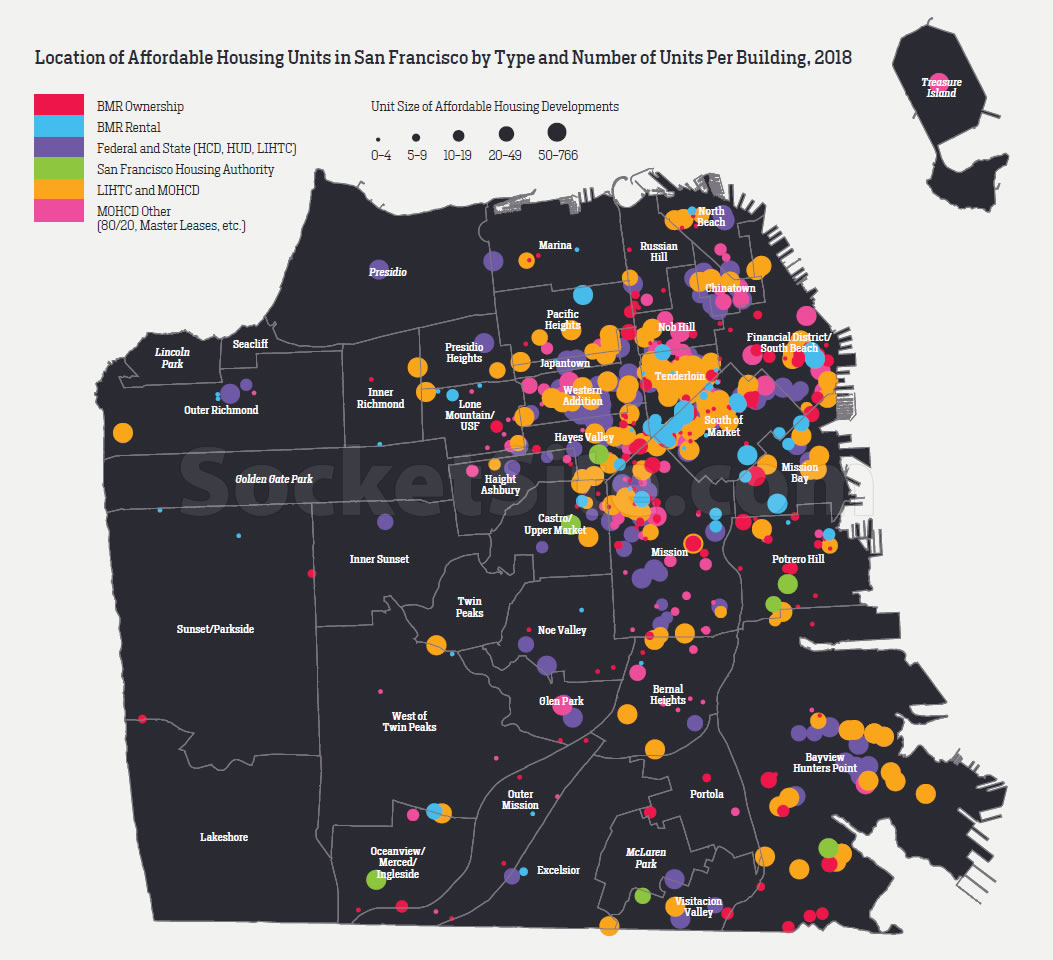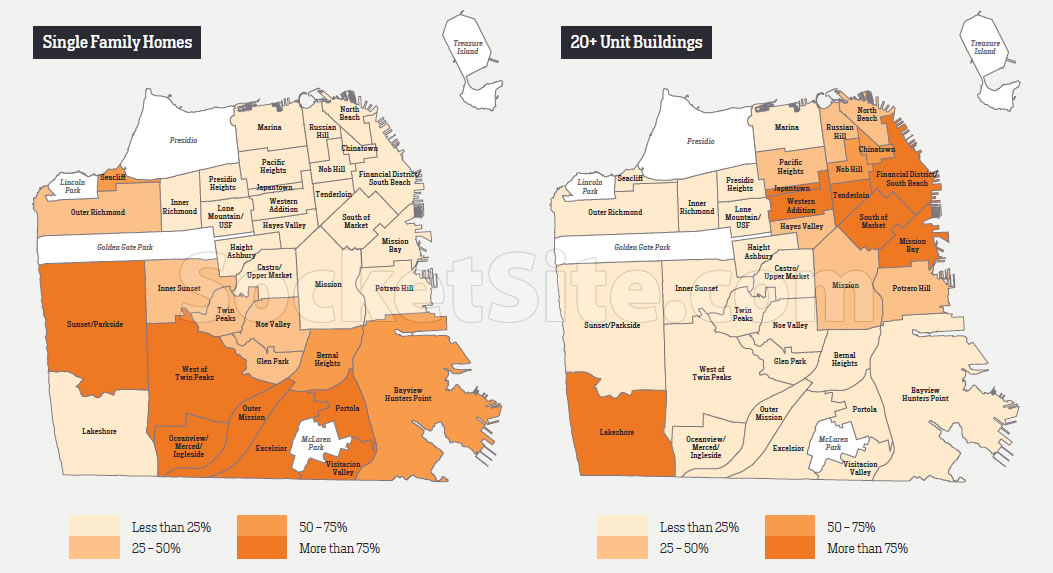Intended as a foundational element to help guide a new Housing Affordability Strategy (HAS), polices and plans for the city, the first edition of a new Housing Needs and Trends Report (HNTR) will be released to the public on July 12.
A couple of key findings and statistics from an executive summary which will be presented to San Francisco’s Planning Commission next week:
1. As mapped above, 60 percent of San Francisco’s 33,000 units of affordable housing are concentrated in just five (5) neighborhoods on the eastern side of the city, with 18 percent in the Tenderloin; 12 percent South of Market; 11 percent in Western Addition; 11 percent in Bayview Hunters Point; and 8 percent in the Mission.
2. A little less than half (48 percent) of the city’s 362,000 residential units are either single-family homes (27 percent) or within the walls of multi-unit buildings with four units or less (21 percent).
3. At the same time, buildings with four units or less occupy roughly 82 percent of the city’s land, including 96,100 single family homes which are predominantly in the western and southern neighborhoods and occupy roughly 6,334 of the city’s 10,195 acres or 62 percent of the land.
UPDATE (7/12): The complete Housing Needs and Trend Report (2018) is now available for perusal.


Buildings occupying 82% of the land – 4 units or less – sounds like a lot. And some here might say – see, we need massive up-zoning West of Twin Peaks. And SE too. But what are the equivalent numbers for the Gold Rush city to the north, or LA or San Diego? More apropos, what are the numbers for NYC, Chicago or Philadelphia? 82% may not be all that high or out of the norm.
“Gold Rush” city? Seattle recently proved itself to be a one Company Town.
You always quote Cities out of State but we don’t care about them. We have to look after ourselves and try to alleviate the problems here.
Stop using out right falsehoods, labeling SUBSIDIZED housing as affordable. All housing is affordable to someone. Subsidized is the actual truth and what separates it from all other housing.
Yes. And all rentals must accept Section 8 vouchers per law. Even more subsidy.
If we had a database of actual rents people were paying, this study would be more meaningful. Plenty of long term tenants across the city have low rents that are de facto affordable housing.
Yep. A database of actual rents paid for all rental units in SF would be very useful and informative for public policy.
And include an anon. survey of the tenant profile of each rent controlled unit submitted by the landlords.
Why anonymous? The rent board tracks buildings – why shouldn’t they track tenants?
This could double as a crime map as well
How much does the geology of SF have to do with zoning. being close to a major fault and some of the land being bay fill also may be a factor.
UPDATE: The complete Housing Needs and Trend Report (2018) is now available for perusal.